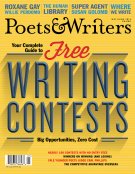Jennifer Benka has been the executive director of the Academy of American Poets for less than two years, having succeeded Tree Swenson in June 2012, but already she has organized a massive rebranding campaign to mark the New York City–based nonprofit’s eightieth anniversary this year. In the weeks leading up to National Poetry Month, Benka spoke about the redesign of the organization’s website, poets.org, and how several enhancements—including a newly restored font designed specifically for poets—will help promote the art form across the country. How does rebranding promote the Academy’s mission of building a wider audience for poetry?
How does rebranding promote the Academy’s mission of building a wider audience for poetry?
One of the greatest ways in which we strive to accomplish our mission is on the web. The Academy was the first poetry organization to be online, back in 1996. We have gone through many iterations in terms of our visual identity, and as we looked at redesigning poets.org it was clear that the first step was to address branding concerns. The rebranding will carry our visual identity across all of our programs. The site was more than ten years old, and because the technology was outdated we just weren’t able to do what we wanted to do in terms of providing users a seamless experience. The new platform allows users to experience poetry and learn about poets in an enjoyable environment; and for the first time, the breadth of our content is now available to users on mobile devices.
What changes have been made to the look of the website?
After a months-long process of looking at our history and talking about where we hoped to go in the future, what we wound up with is rooted in typography. In our system we use two main typefaces: a modern, round font used in lowercase, Founders Grotesk, paired with a new version of Electra, a font that was originally drawn in 1935, around the same time that the Academy was launched. Electra is a very classic American literary font but it was last digitized in the eighties, so no one uses it. We commissioned a version of Electra to be drawn for the web, and on our new site we feature poems cast in this newly restored font called Poets Electra. So we hope the poems will look absolutely gorgeous to the reader. We want poems online to really reflect that the poem itself is an art object. We enable users to embed poems from the site in that new font and achieve the same beautiful presentation on other platforms.
What about the community-building aspects of the website—any developments on that front?
For the first time, we’ll be building content based on geolocation: If you’re a user coming to poets.org and you live in Texas, right there on the home page you will be served up information about events or poetry-related content in your area, whether it be bookstores that sell poetry, poetry workshops going on, things like that. There is stuff everywhere. Poetry is alive and vibrant, and it feels like the art form is having a renaissance in all fifty states. It’s been incredible to see.
What do you want new users to take away from the updated site?
We want to marry the written word with a visual sensibility, and we hope that users coming to the new poets.org will see that, and have that experience. We’re incorporating more photography and other content from our extensive archive, going back eight decades, so we’re definitely trying to make that a priority, while highlighting the fact that very talented poets working in this country today are still in need of more visibility and more appreciation. More than ever before, we want to communicate our devotion to poets.
Cat Richardson is the managing editor of Bodega Magazine and a poetry editor at Phantom Limb Press. Her work has appeared in Four Way Review, Tin House, and Sonora Review, among others.









Comments
M. Sakran replied on Permalink
Visual Presentation of Poetry
How poetry looks can often be very important to the experience of reading it. I think focusing on the visual aspect of how poetry is presented is a useful thing.